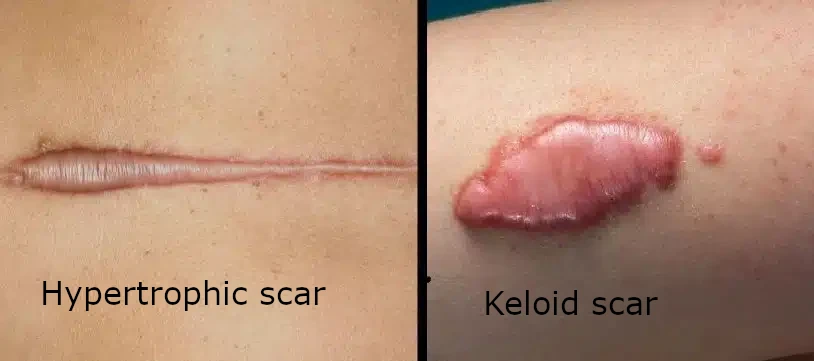
About Scars
Scars are a normal response to healing of any trauma to the skin. Most scars will heal well and not ever become a problem but however, some scars will become problematic over time.
Unsatisfactory scars may be:
- Thickened
- hypertrophic scar – thick scar that stays within the borders of the wound. Usually develops within weeks of the injury
- keloid scarring – very thick scar that grows beyond the boundaries of the original insult. There is usually a family history of this (i.e genetic) and the scar tends to start growing months after the injury. Scar locations in the ear, chest, shoulders, pubis and back are prone to keloid.
- Discoloured – may be hyperpigmented or erythematous (reddened scar)
- Stretched
- Painful
To minimise these problems, it is vital to take good care of the wound during the healing phase.
This includes:
- Initial taping of the scar to reduce thickening and stretching
- Avoid sun exposure to the scar to minimise hyperpigmentation (darkening of the scar)
- Application of medical silicone either as a gel or tape
- Ensure good pain relief to minimise the development of a chronically painful scar.
- Scars over mobile surfaces (back and over joints) will tend to stretch over time. Minimise movements to these areas while the scar is healing will reduce the likelihood of the scar stretching.
Despite these precautions, scars can still progress due to genetic factors or complications during the healing such as infection, allergies (to suture or dressing) and wound dehiscence.
Treatment of Scars
- Non surgical – these should be tried first and include wound massages, LED light, silicone scar treatment, ultrasound and compression/taping These treatments are usually done in conjunction with an occupational therapist
- Intralesional steroid injection – this is especially useful for keloid type scarring and some more resistant hypertrophic scarring. Multiple injections are often required on a monthly basis and Dr Teh usually performs them in his rooms.
- Laser – laser can be helpful for resurfacing mildly thickened scars. It is also effective in treating discolored scars
- Radiotherapy – superficial radiotherapy is very effective in preventing scar recurrence after surgery. There are some side effects from radiotherapy and this will be discussed with you by the treating radiation oncologist if you embark on this treatment.
- Surgery – surgery to revise scars can be performed alone or in conjunction with steroid injections, laser or radiotherapy. Surgery alone works best in treating scars that are depressed or stretched. When treating keloidal scars with surgery, it is best combined with either steroid injection or radiotherapy.
Do discuss with Dr Teh about your scars if you find them problematic.
